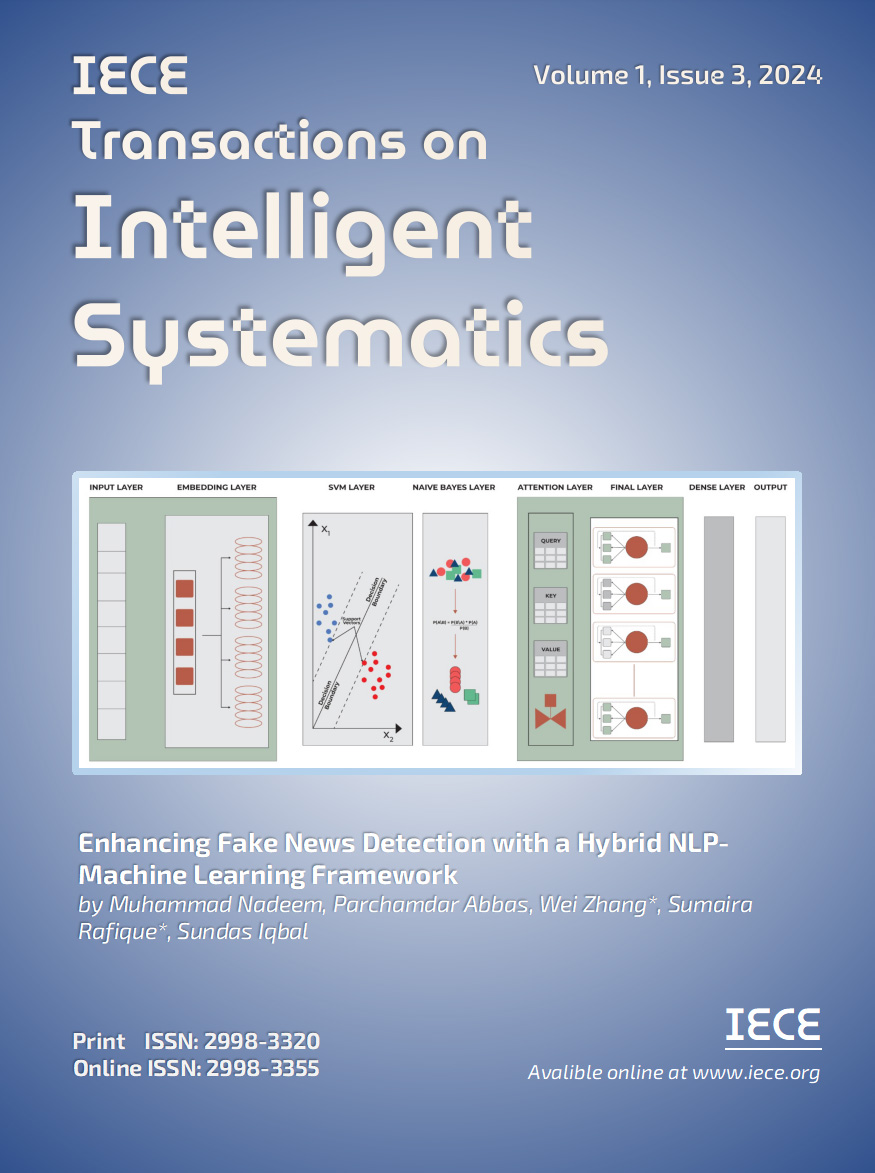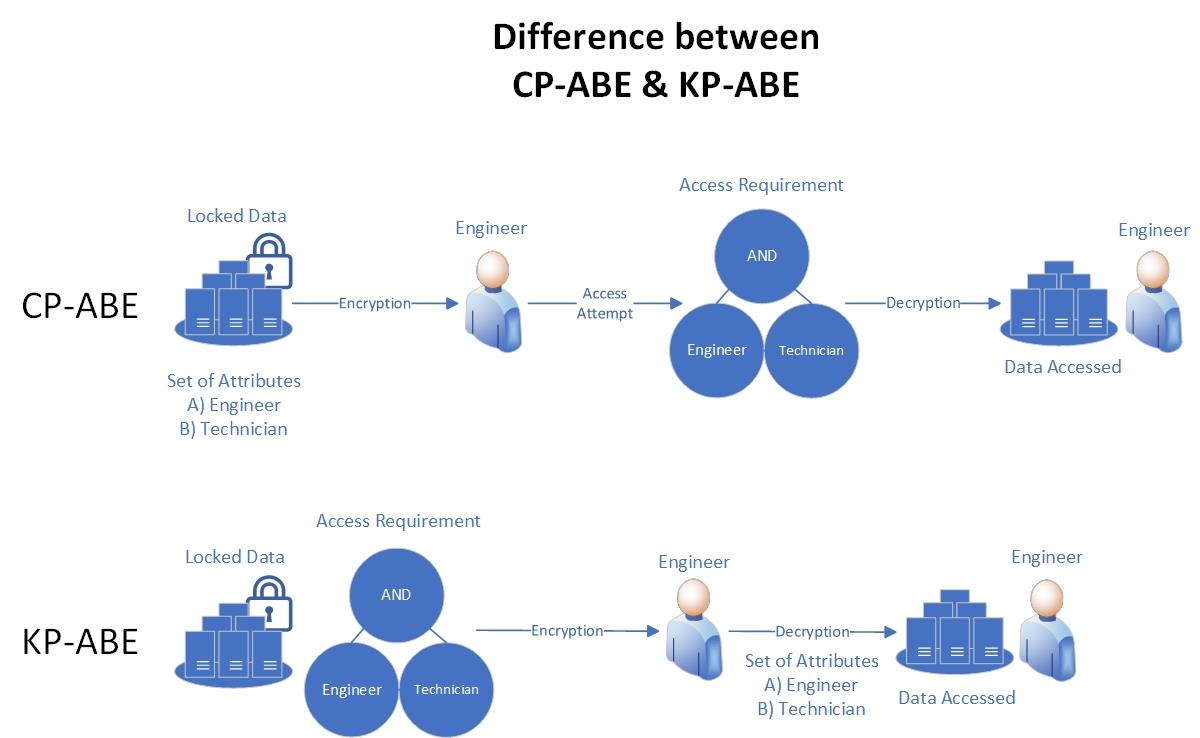IECE Transactions on Intelligent Systematics
ISSN: 2998-3355 (Online) | ISSN: 2998-3320 (Print)
Email: [email protected]


 Submit Manuscript
Edit a Special Issue
Submit Manuscript
Edit a Special Issue

[1] Kitchenham, B., Brereton, O. P., Budgen, D., Turner, M., Bailey, J., & Linkman, S. (2009). Systematic literature reviews in software engineering–a systematic literature review. Information and software technology, 51(1), 7-15.
[2] Sahai, A., & Waters, B. (2005). Fuzzy identity-based encryption. In Advances in Cryptology–EUROCRYPT 2005: 24th Annual International Conference on the Theory and Applications of Cryptographic Techniques, Aarhus, Denmark, May 22-26, 2005. Proceedings 24 (pp. 457-473). Springer Berlin Heidelberg.
[3] Mohassel, P. (2011). One-time signatures and chameleon hash functions. In Selected Areas in Cryptography: 17th International Workshop, SAC 2010, Waterloo, Ontario, Canada, August 12-13, 2010, Revised Selected Papers 17 (pp. 302-319). Springer Berlin Heidelberg.
[4] Wang, S., J. (2022). Application of User Identity Authentication Technology in Network Information Security. Inf. Comput. (Theor. Ed.), vol. 08, pp. 221–223.
[5] Chen, Y., J., Gao, H., R., and Ding, Z. J. (2023). Credit Evaluation Model Based on Dynamic Machine Learning. Comput. Sci., vol. 01, pp. 59–68.
[6] Yin, F., F. (2021). Research on Revocable and Searchable Attribute-Based Encryption Algorithms. (Master’s thesis, Xidian University).
[7] Sebbah, A., & Kadri, B. (2020, June). A privacy and authentication scheme for IoT environments using ECC and fuzzy extractor. In 2020 International Conference on Intelligent Systems and Computer Vision (ISCV) (pp. 1-5). IEEE.
[8] Punithavathi, P., Geetha, S., Karuppiah, M., Islam, S. H., Hassan, M. M., & Choo, K. K. R. (2019). A lightweight machine learning-based authentication framework for smart IoT devices. Information Sciences, 484, 255-268.
[9] Li, J., Au, M. H., Susilo, W., Xie, D., & Ren, K. (2010, April). Attribute-based signature and its applications. In Proceedings of the 5th ACM symposium on information, computer and communications security (pp. 60-69).
[10] Sucasas, V., Mantas, G., Papaioannou, M., & Rodriguez, J. (2021). Attribute-based pseudonymity for privacy-preserving authentication in cloud services. IEEE Transactions on Cloud Computing, 11(1), 168-184.
[11] Guo, L., Zhang, C., Sun, J., & Fang, Y. (2012, June). Paas: A privacy-preserving attribute-based authentication system for ehealth networks. In 2012 IEEE 32nd International Conference on Distributed Computing Systems (pp. 224-233). IEEE.
[12] Papadamou, K., Zannettou, S., Chifor, B., Teican, S., Gugulea, G., Caponi, A., ... & Sirivianos, M. (2019). Killing the password and preserving privacy with device-centric and attribute-based authentication. IEEE Transactions on Information Forensics and Security, 15, 2183-2193.
[13] Guo, L., Zhang, C., Sun, J., & Fang, Y. (2013). A privacy-preserving attribute-based authentication system for mobile health networks. IEEE Transactions on Mobile Computing, 13(9), 1927-1941.
[14] Maji, H. K., Prabhakaran, M., & Rosulek, M. (2011, February). Attribute-based signatures. In Cryptographers’ track at the RSA conference (pp. 376-392). Berlin, Heidelberg: Springer Berlin Heidelberg.
[15] Dzurenda, P., Casanova-Marqués, R., Malina, L., & Hajny, J. (2022, August). Real-world Deployment of Privacy-Enhancing Authentication System using Attribute-based Credentials. In Proceedings of the 17th International Conference on Availability, Reliability and Security (pp. 1-9).
[16] Schläger, C., Priebe, T., Liewald, M., & Pernul, G. (2007). Enabling attribute-based access control in authentication and authorisation infrastructures.
[17] García-Rodríguez, J., & Skarmeta, A. (2023). A privacy-preserving attribute-based framework for IoT identity lifecycle management. Computer Networks, 236, 110039.
[18] Liu, Z., Yan, H., & Li, Z. (2015). Server-aided anonymous attribute-based authentication in cloud computing. Future Generation Computer Systems, 52, 61-66.
[19] Bhatt, S., Pham, T. K., Gupta, M., Benson, J., Park, J.,& Sandhu, R. (2021). Attribute-based access control for AWS internet of things and secure industries of the future. IEEE Access, 9, 107200-107223.
[20] Yu, Y., Zhao, Y., Li, Y., Du, X., Wang, L., & Guizani, M. (2019). Blockchain-based anonymous authentication with selective revocation for smart industrial applications. IEEE Transactions on Industrial Informatics, 16(5), 3290-3300.
[21] Huang, Q., Ma, Z., Yang, Y., Niu, X., & Fu, J. (2014). Attribute based DRM scheme with dynamic usage control in cloud computing. China Communications, 11(4), 50-63.
[22] Prasanna, V. L., & Kumar, C. K. R. (2015). A Novel Cipher Text Policy Attribute Based Encryption Algorithm for a Secure Data Retrieval in Military Networks.
[23] Liagkou, V., Metakides, G., Pyrgelis, A., Raptopoulos, C., Spirakis, P., & Stamatiou, Y. C. (2014). Privacy preserving course evaluations in Greek higher education institutes: an e-Participation case study with the empowerment of Attribute Based Credentials. In Privacy Technologies and Policy: First Annual Privacy Forum, APF 2012, Limassol, Cyprus, October 10-11, 2012, Revised Selected Papers 1 (pp. 140-156). Springer Berlin Heidelberg.
[24] Bakar, K. A. A., & Haron, G. R. (2013, June). Adaptive authentication: Issues and challenges. In 2013 World Congress on Computer and Information Technology (WCCIT) (pp. 1-6). IEEE.
[25] Servos, D., & Osborn, S. L. (2017). Current research and open problems in attribute-based access control. ACM Computing Surveys (CSUR), 49(4), 1-45.
[26] Hariss, K., & Noura, H. (2022). Towards a fully homomorphic symmetric cipher scheme resistant to plain-text/cipher-text attacks. Multimedia Tools and Applications, 81(10), 14403-14449.
[27] Lai, J., Deng, R. H., & Li, Y. (2011). Fully secure cipertext-policy hiding CP-ABE. In Information Security Practice and Experience: 7th International Conference, ISPEC 2011, Guangzhou, China, May 30–June 1, 2011. Proceedings 7 (pp. 24-39). Springer Berlin Heidelberg.
[28] Touati, L., & Challal, Y. (2016, May). Collaborative kp-abe for cloud-based internet of things applications. In 2016 IEEE International Conference on Communications (ICC) (pp. 1-7). IEEE.
[29] Kim, J., Susilo, W., Guo, F., Au, M. H., & Nepal, S. (2017, April). An efficient KP-ABE with short ciphertexts in prime ordergroups under standard assumption. In Proceedings of the 2017 ACM on Asia Conference on Computer and Communications Security (pp. 823-834).
[30] Chen, N., Li, J., Zhang, Y., & Guo, Y. (2020). Efficient CP-ABE scheme with shared decryption in cloud storage. IEEE Transactions on Computers, 71(1), 175-184.
[31] Bethencourt, J., Sahai, A., & Waters, B. (2007, May). Ciphertext-policy attribute-based encryption. In 2007 IEEE symposium on security and privacy (SP’07) (pp. 321-334). IEEE.
[32] Goyal, V., Pandey, O., Sahai, A., & Waters, B. (2006, October). Attribute-based encryption for fine-grained access control of encrypted data. In Proceedings of the 13th ACM conference on Computer and communications security (pp. 89-98).
[33] He, X., Li, L., & Peng, H. (2023). A key escrow-free KP-ABE scheme and its application in stand-alone authentication in IoT. IEEE Internet of Things Journal.
[34] Waters, B. (2011, March). Ciphertext-policy attribute-based encryption: An expressive, efficient, and provably secure realization. In International workshop on public key cryptography (pp. 53-70). Berlin, Heidelberg: Springer Berlin Heidelberg.
[35] Oberko, P. S. K., Obeng, V. H. K. S., & Xiong, H. (2022). A survey on multi-authority and decentralized attribute-based encryption. Journal of Ambient Intelligence and Humanized Computing, 1-19.
[36] Lewko, A., & Waters, B. (2011, May). Decentralizing attribute-based encryption. In Annual international conference on the theory and applications of cryptographic techniques (pp. 568-588). Berlin, Heidelberg: Springer Berlin Heidelberg.
[37] Binbusayyis, A., & Zhang, N. (2015, June). Decentralized attribute-based encryption scheme with scalable revocation for sharing data in public cloud servers. In 2015 International Conference on Cloud Technologies and Applications (CloudTech) (pp. 1-8). IEEE.
[38] Oosterhout, J. (2023). Formal Verification of Lightweight Decentralized Attribute-based Encryption (Master’s thesis, University of Twente).
[39] Trnka, M., Abdelfattah, A. S., Shrestha, A., Coffey, M., & Cerny, T. (2022). Systematic review of authentication and authorization advancements for the Internet of Things. Sensors, 22(4), 1361.
[40] Arshad, H., Johansen, C., & Owe, O. (2022). Semantic attribute-based access control: A review on current status and future perspectives. Journal of Systems Architecture, 129, 102625.
[41] Lee, J., Hwang, S. and Park, J.(2020). Attribute-Based Access Control for Secure Information Sharing in Financial Services. In Proc. 2020 IEEE International Conference on Financial Services and Information Sharing, pp. 1-7.
[42] Mehta, S., Khurana, H. and Kolhe, P. (2019). Attribute-Based Access Control for Secure Information Sharing in the Defense Industry. In Proc. 2019 IEEE International Conference on Defense and Security, pp. 1-6.
[43] Sundararajan, A., Sarkar, A. and Prasad, R. (2021). Attribute-Based Access Control for Secure Information Sharing in the Energy Sector. In Proc. 2021 IEEE International Conference on Energy and Data Security, pp. 1-8.
[44] Schwartz, E., Brumley, D., Newsome, J. and Perkins, J. (2020). Attribute-Based Access Control at Google. In Proc. 2020 USENIX Conference on Operational Machine Learning, pp. 1-10.
IECE Transactions on Intelligent Systematics
ISSN: 2998-3355 (Online) | ISSN: 2998-3320 (Print)
Email: [email protected]

Portico
All published articles are preserved here permanently:
https://www.portico.org/publishers/iece/